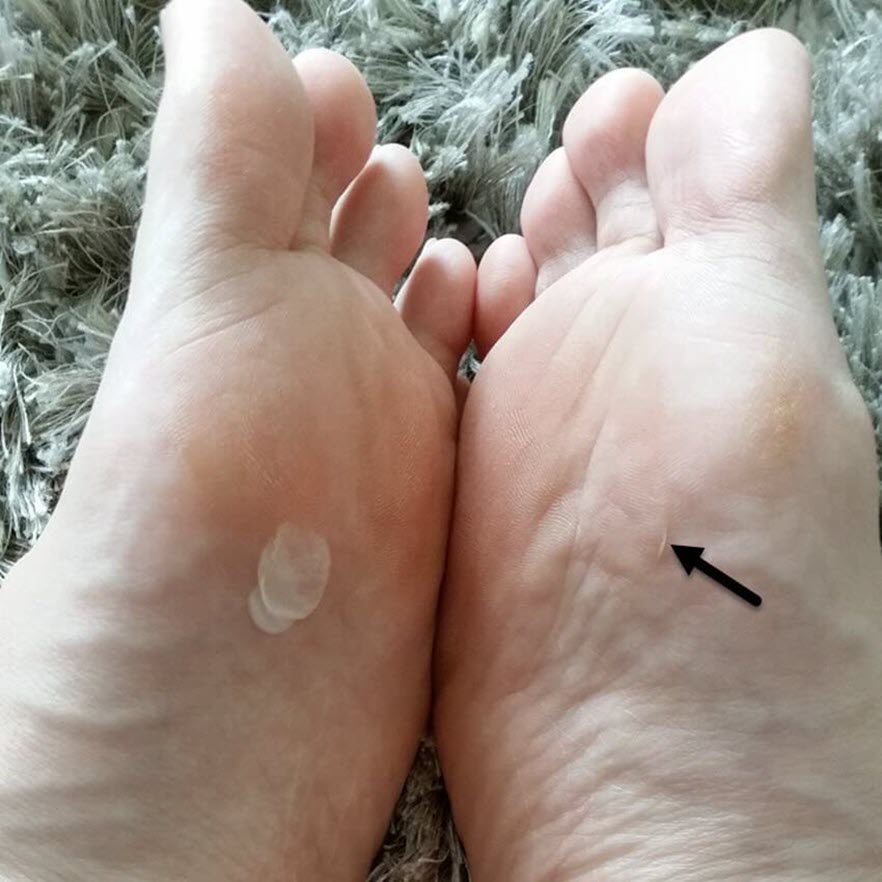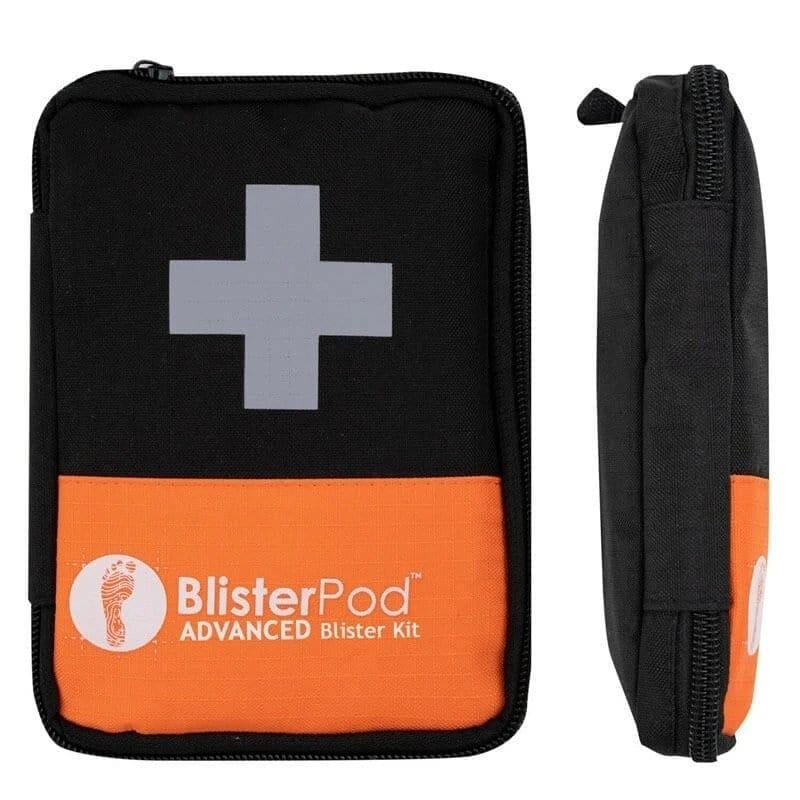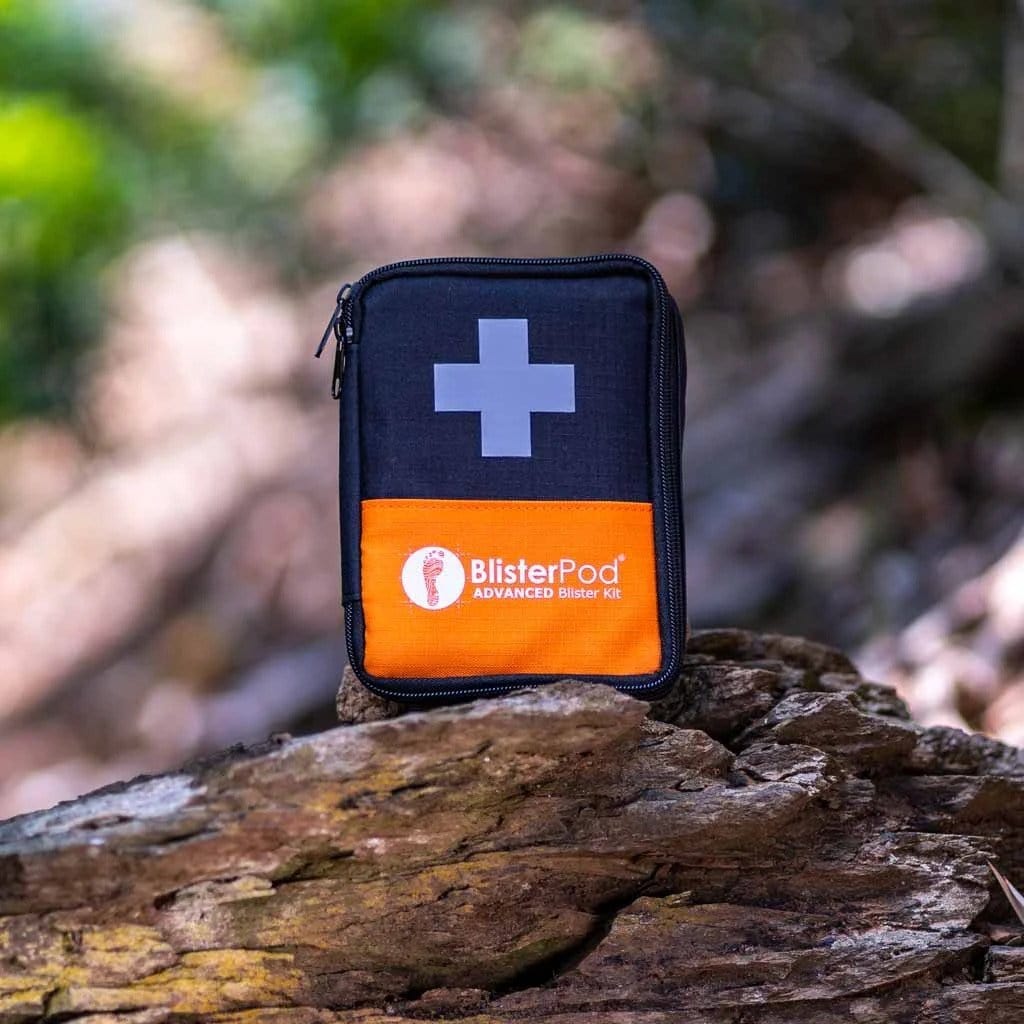Days? Weeks? Longer? I answered the question "how long does it take for a blister to heal" in a short video and received a comment from "Doctor Killer" (weird name) calling me a liar. Well that's one way to get my attention!
How Long Do Blisters Really Take To Heal?
To cut a short story shorter, it takes up to 6 weeks for a blister to heal… completely. A bit longer for blood blisters.
The slightly longer version is this…
Three weeks is often quoted as the time it takes for the epidermis to grow from its deepest layer to its most superficial layer before it sheds off naturally. This is for "normal" areas of skin which excludes the unique skin of the soles and palms.
Skin of the Soles and Palms
The skin on the soles of the feet (plantar) and palms of the hands (palmar) is known to be different to skin on other parts of the body, like the arms and legs. Plantar and palmar skin is thicker, has more sweat glands, no hair, has slighltly different layers and is overall much more resistant to shear forces.
On this skin, you will still see signs of blister damage up to 6 weeks after you first sustained the blister. It's important to realise this because I occasionally have people say their new blister prevention strategy isn't working after 3 weeks or so, because their skin still doens't look normal. The fact is, they're just seeing the damaged skin still working its way to the surface before it finally flakes away as dead skin cells.
Back on Your Feet
But it’s not like you’re going to be laid up with your blister, unable to walk. It might only take a day or two for the blister fluid to reabsorb within an intact blister. It might only be 3 days before the roof of your torn blister kind of melds back onto your blister such that it's no longer weepy. And it might only take a week or 10 days before your deroofed blister has new skin healed over the top thanks to your use of a hydrocolloid blister plaster.
In truth, this is probably what people are wondering when they search “how long does it take for a blister to heal”. So I completely understand Doctor Killer's comment.
Photographic Healing Timeline of a Mild Plantar Blister
Here's a photographic timeline of two blisters. These are my blisters. I got them under the ball of my foot (sub 1st MPJ) from walking an unexpectedly long way in new sandals. They're not bad, by any stretch of the imagination. But you can clearly see there has been a separation of skin layers under the skin surface and there is a small amount of blister fluid under the intact blister roof.
DAY 1 (30 minutes after feeling the sting of the blister injury)
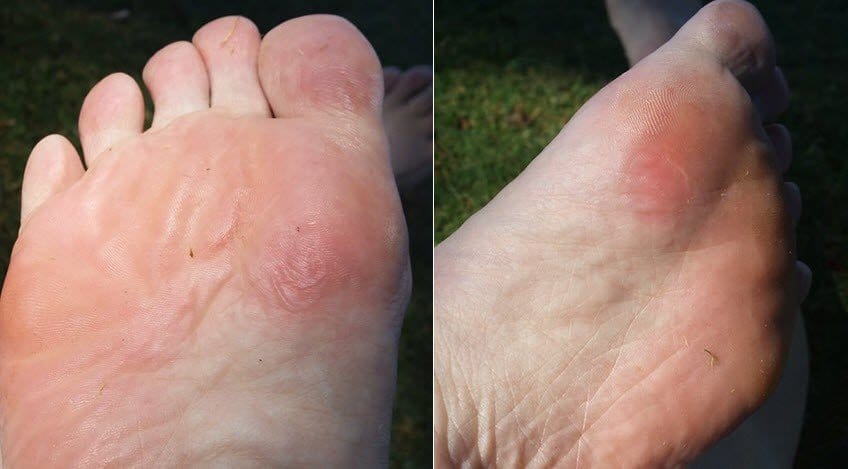
Image: 30 minutes after the blister injury
LATER ON DAY 1
You can consider this as fluid-filled as it's going to get (assuming you've stopped the skin shear). There's not much fluid, is there? This isn't a bad blister.
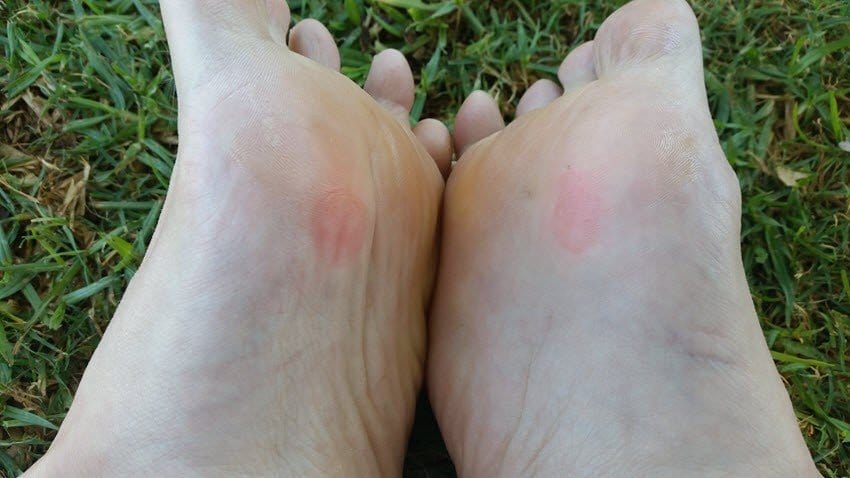
Image: After 3 hours
DAY 2
The following day, the blister roof is still intact on both feet and there has been reabsorption of most of the blister fluid (you can see the loose skin).
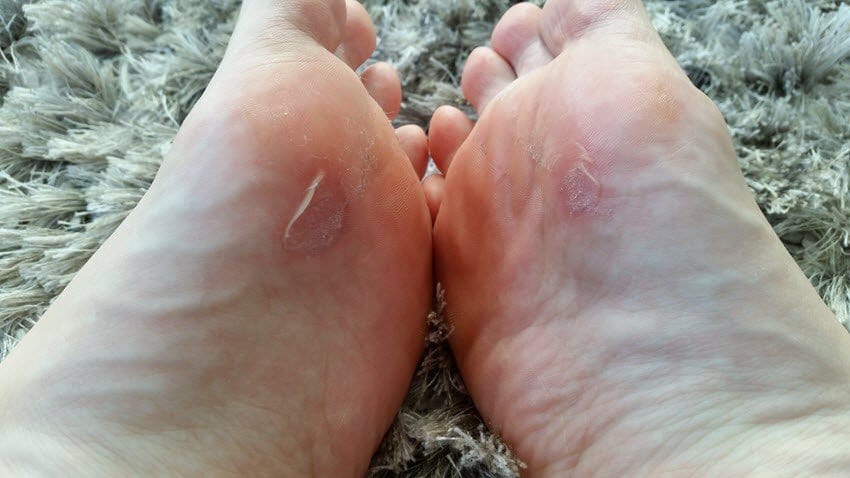
Image: Day 2
DAY 30
A month later and the injured epidermis is yet to shed from the left foot. On the right foot, the roof looks to be fully adhered to the blister base with only a small area of excess skin evident (arrow).
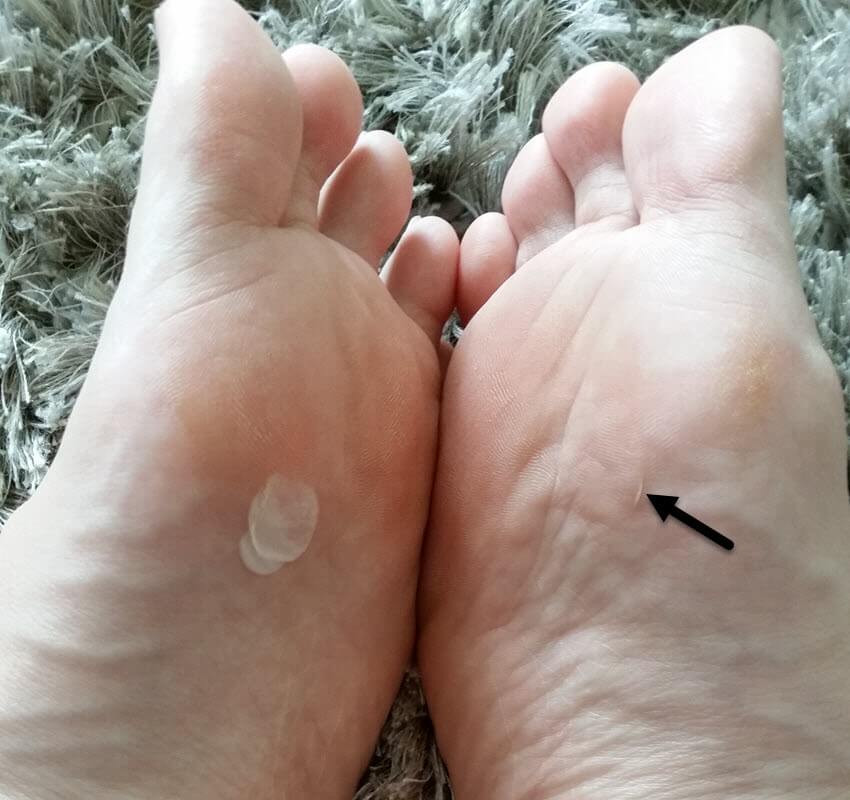
Image: Day 30
DAY 47
Six weeks and five days later, all damaged skin has shed (almost). You can see the outer margins of the blister injury. This means the skin is not quite full thickness where the blister occurred yet.
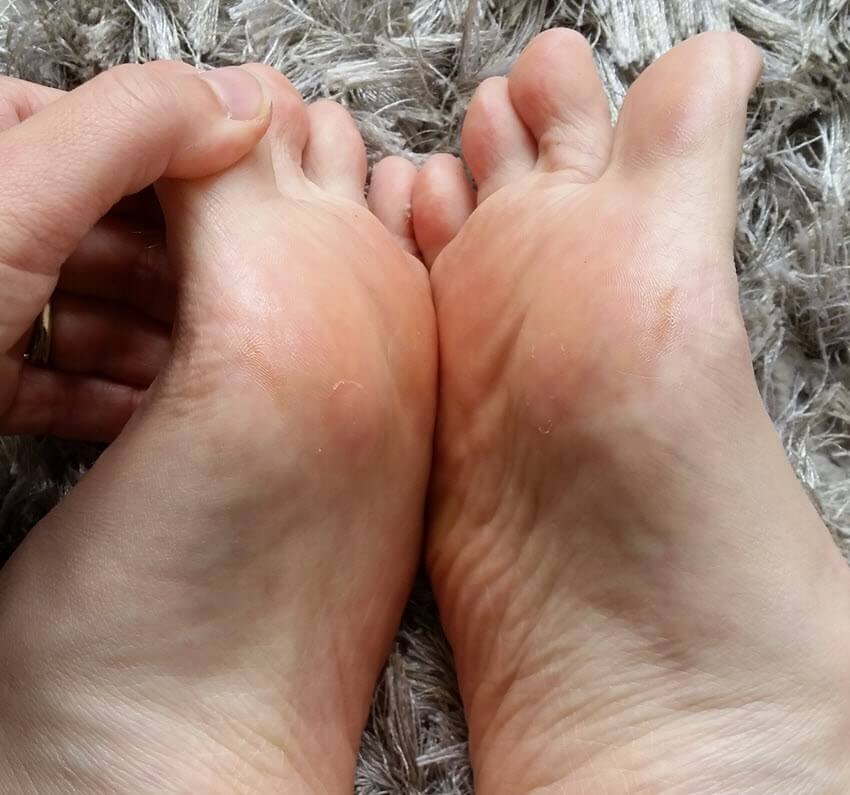
Image: Day 47 (almost 7 weeks after blister formation)
Moral of the Blister Healing Time Story
The next time you get a blister and you wonder to yourself, how long does it take for a blister to heal, you'll know the answer. Six weeks!
This has implications for how you judge your new blister prevention strategy. Before you can say that strategy isn't working, you need to give your skin time to shed all of the previous damage.
If your feet looked like the day 30 photo, you might jump to the conclusion that whatever prevention strategy you've since put in place, isn't working. But you'd be wrong. This is just the damaged skin moving closer to the surface.
Note: These blisters received the very best management techniques as soon as they appeared (island dressing, donut pad/cushioning, an Engo patch on every shoe I wore) throughout the entire healing process, right up to this last image.
What Will Delay Blister Healing?
- Not reducing skin shear - Healing can not begin with any momentum until you get rid of the forces that caused the blister, as of day one. Remember, these are the forces that when repetative, cause blisters.
- Another blister in the same area - Just because you do all the right things for 2, 3 or 4 weeks doesn't mean the job is done. If you remove your prevention strategies before the blister has fully healed, and subject it to more blister-causing forces, it will re-blister.
- Callouses - The thicker your skin, the longer it will take to grow back to the same thickness as the surrounding skin. If your callous is very thick, its very presence is probably injuring your blister base. Keep callouses to a minimum.
Wrapping Up
While your blister might feel good enough to walk and run on in a few days, the damaged flakey skin still needs to "grow out". The time it takes for skin on the sole of your foot to work its way from the initial level of damage to the surface is much longer. Six weeks is how long it takes for a blister to heal fully. If you're looking for some great blister treatment and prevention gear, take a look at our ADVANCED Blister Kit.
